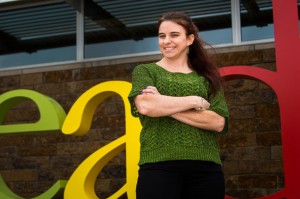By DAVID STREITFELD
From the New York Times
SAN FRANCISCO — Before the Internet, books were written — and published — blindly, hopefully. Sometimes they sold, usually they did not, but no one had a clue what readers did when they opened them up. Did they skip or skim? Slow down or speed up when the end was in sight? Linger over the sex scenes?
A wave of start-ups is using technology to answer these questions — and help writers give readers more of what they want. The companies get reading data from subscribers who, for a flat monthly fee, buy access to an array of titles, which they can read on a variety of devices. The idea is to do for books what Netflix did for movies and Spotify for music.
“Self-published writers are going to eat this up,” said Mark Coker, the chief executive of Smashwords, a large independent publisher. “Many seem to value their books more than their kids. They want anything that might help them reach more readers.”
Last week, Smashwords made a deal to put 225,000 books on Scribd, a digital library here that unveiled a reading subscription service in October. Many of Smashwords’ books are already on Oyster, a New York-based subscription start-up that also began in the fall.
The move to exploit reading data is one aspect of how consumer analytics is making its way into every corner of the culture. Amazon and Barnes & Noble already collect vast amounts of information from their e-readers but keep it proprietary. Now the start-ups — which also include Entitle, a North Carolina-based company — are hoping to profit by telling all.
“We’re going to be pretty open about sharing this data so people can use it to publish better books,” said Trip Adler, Scribd’s chief executive.
Quinn Loftis, a writer of young adult paranormal romances who lives in western Arkansas, interacts extensively with her fans on Facebook, Pinterest, Twitter, Goodreads, YouTube, Flickr and her own website. These efforts at community, most of which did not exist a decade ago, have already given the 33-year-old a six-figure annual income. But having actual data about how her books are being read would take her market research to the ultimate level.
“What writer would pass up the opportunity to peer into the reader’s mind?” she asked.
Scribd is just beginning to analyze the data from its subscribers. Some general insights: The longer a mystery novel is, the more likely readers are to jump to the end to see who done it. People are more likely to finish biographies than business titles, but a chapter of a yoga book is all they need. They speed through romances faster than religious titles, and erotica fastest of all.
At Oyster, a top book is “What Women Want,” promoted as a work that “brings you inside a woman’s head so you can learn how to blow her mind.” Everyone who starts it finishes it. On the other hand, Arthur M. Schlesinger Jr.’s “The Cycles of American History” blows no minds: fewer than 1 percent of the readers who start it get to the end.
Oyster data shows that readers are 25 percent more likely to finish books that are broken up into shorter chapters. That is an inevitable consequence of people reading in short sessions during the day on an iPhone.
A few writers might be repelled by too much knowledge. But others would be fascinated, as long as they retained control.
“Would we provide this data to an author? Absolutely,” said Chantal Restivo-Alessi, chief digital officer for HarperCollins Publishers. “But it is up to him how to write the book. The creative process is a mysterious process.”
The services say they will make the data anonymous so readers will not be identified. The privacy policies however are broad. “You are consenting to the collection, transfer, manipulation, storage, disclosure and other uses of your information,” Oyster tells new customers.
Before writers will broadly be able to use any data, the services must become viable by making deals with publishers to supply the books. Publishers, however, are suspicious of yet another disruption to their business. HarperCollins has signed up with Oyster and Scribd, but Penguin Random House and Simon & Schuster have thus far stayed away.
Some agents, too, are wary.

Quinn Loftis, a writer of romances, interacts with readers on Facebook, Pinterest, Twitter, Goodreads, YouTube, Flickr and her website.
“It’s hard to tell authors that it’s worth starting a new relationship with any of these new services,” said Ted Weinstein, an agent in San Francisco. “It is literally an unsustainable business model.”
Here is how Scribd and Oyster work: Readers pay about $10 a month for a library of about 100,000 books from traditional presses. They can read as many books as they want.
“We love big readers,” said Eric Stromberg, Oyster’s chief executive. But Oyster, whose management includes two ex-Google engineers, cannot afford too many of them.
This could be called the Sizzler problem. In the 1990s, the steak restaurant chain tried to beef up sales with an all-you-can-eat salad bar, which got bigger as it got more popular. But as more hungry customers came, the chain was forced to lower quality, which caused customers to flee, which resulted in bankruptcy.
“Sure, if you had a buffet and everyone ate everything, it wouldn’t be a profitable business,” said Mr. Adler of Scribd. “But generally people only eat so much.” Only 2 percent of Scribd’s subscribers read more than 10 books a month, he said.
These start-ups are being forced to define something that only academic theoreticians and high school English teachers used to wonder about: How much reading does it take to read a book? Because that is when the publisher, and the writer, get paid.
The companies declined to outline their business model, but publishers said Scribd and Oyster offered slightly different deals. On Oyster, once a person reads more than 10 percent of the book, it is officially considered “read.” Oyster then has to pay the publisher a standard wholesale fee. With Scribd, it is more complicated. If the reader reads more than 10 percent but less than 50 percent, it counts for a tenth of a sale. Above 50 percent, it is a full sale.
Both services say the response has been enthusiastic, but neither provided precise numbers.
Looming over these start-ups is Amazon, which has already dabbled in the subscription area. Kindle owners who are members of Amazon’s $79 annual Prime shipping service are eligible to borrow from a library of 350,000 titles. The program has had limited impact because users can borrow only one book at a time, and it offers few best-sellers.
Amazon may have bigger ambitions. Publishers say the retailer has been quietly asking them about how the new all-you-can-read services work, leading to industry speculation it will set up a rival plan. An Amazon spokesman declined to comment.
Scribd, which has received more than $25 million in venture funding, began as a site for posting documents, including pirated books. Offering a subscription service, said Jared Friedman, Scribd’s chief technology officer, “introduces a sort of interesting business opportunity to collaborate with publishers rather than be at odds with them.”
He contrasted two romance novels. One had few Amazon reviews and little promotion, but Scribd’s data showed 6 out of 10 readers were finishing it — above average for the genre. Another romance had hundreds of reviews on Amazon, but only about 4 out of 10 readers bothered to finish it. They began closing the book, the data showed, when the writer plunged deeper into fantasy. Maybe this was not a good idea.
Some writers, of course, might not be receptive to hearing this.
“If you aren’t careful, you could narrow your creativity. You won’t take risks,” said Ms. Loftis, the young adult novelist. “But the bigger risk is not giving the reader what she wants. I’ll take all the data I can get.”

